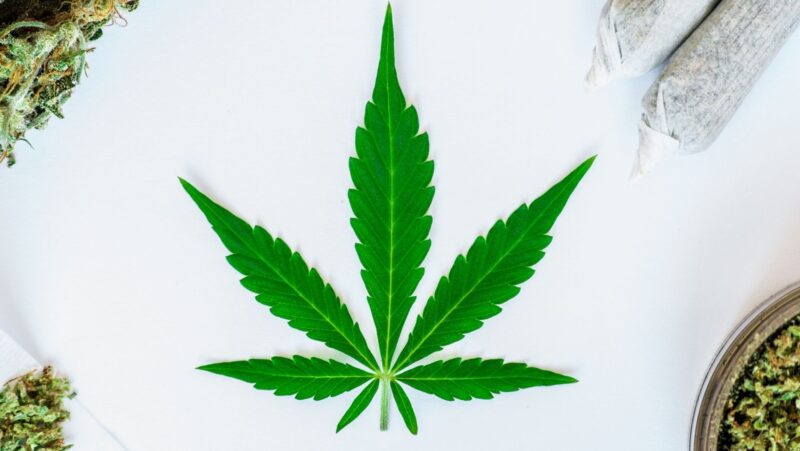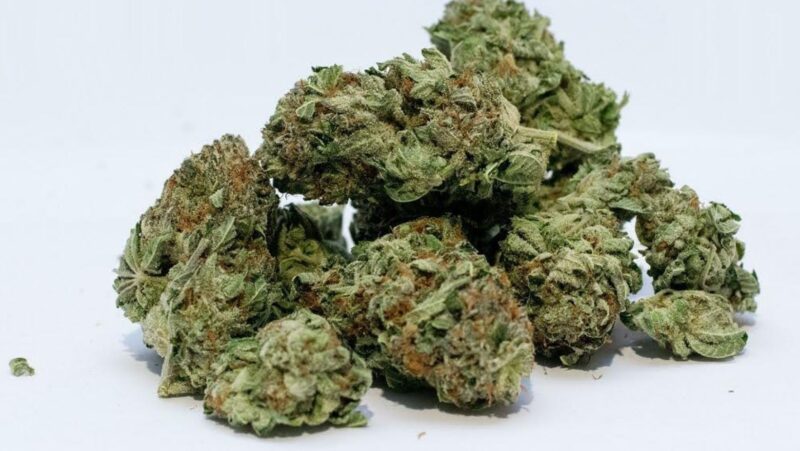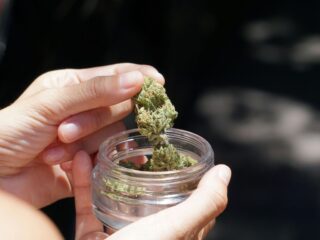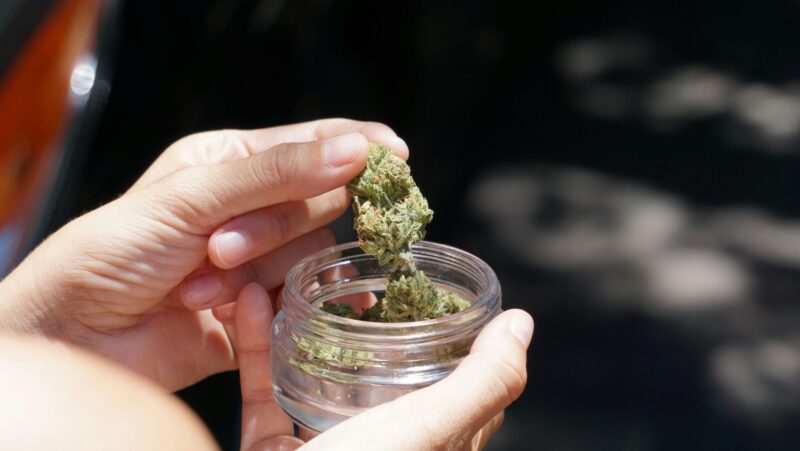
The cannabis industry, whether for medical or recreational use, has a language and culture all its own. From strain names to measurements, understanding weed terminology plays a big role in navigating this world. Among these, the ounce stands out as the gold standard in weed culture. But why is the ounce so revered, and what does this have to do with measurements like 7 grams of weed? To answer that, we need to look at the practical, cultural, and even historical aspects of cannabis consumption and trade.
The Foundation of Cannabis Measurements
To understand the prominence of the ounce in cannabis culture, it helps to know how cannabis is measured and sold. Like many commodities, weed is typically measured by weight, with the gram being the smallest standard unit. From there, quantities scale up through commonly used benchmarks like eighths (3.5 grams), quarters (7 grams of weed), half-ounces (14 grams), and a full ounce (28 grams).
The ounce has taken on a central role in this hierarchy, largely because it’s the largest quantity most individual consumers can legally purchase or realistically consume. Many state laws regarding cannabis possession limit individuals to one ounce of weed at a time, reinforcing its status as a standard.
Practically speaking, an ounce represents a sweet spot for buyers. It provides enough cannabis for repeat use without requiring frequent trips to dispensaries or dealers. Whether a seasoned user or someone sharing with friends, the ounce offers versatility, making it a benchmark in pricing, packaging, and consumption patterns.
The Cultural Significance of the Ounce
Beyond practical considerations, the ounce carries deep cultural significance within weed culture. Its role is rooted in the history of cannabis use, trade, and legalization. Before dispensaries or standardized measurements, cannabis dealers would often use an ounce as a reliable unit, balancing supply with customer demand.

The rise of legalization and regulated cannabis markets has only strengthened the ounce’s place. From pre-packaged ounces on dispensary shelves to “ounce deals” advertised to reward loyal purchasers, this unit has become both a norm and a symbol of cannabis culture. When longtime users think of how much a lot of weed is, the ounce is often their reference point.
The unit’s portability and convenience help as well. For instance, most people don’t want bulky bags when buying or storing their cannabis. An ounce is compact enough to carry discreetly, yet substantial enough to last, cementing its role as the preferred choice for many.
Why Not Smaller Amounts Like 7 Grams of Weed?
Though smaller amounts—such as a quarter, or 7 grams of weed—offer flexibility for casual users, they lack the long-term value of an ounce. Buying in smaller quantities often means spending more per gram, which adds up over time. For those who know they’ll consume cannabis regularly, investing in a full ounce simply makes financial sense.
That said, smaller amounts still play an essential role. For beginners or light users, purchasing 7 grams of weed provides an introduction to cannabis without committing to a larger stash. It also allows for more variety—users can experiment with different strains rather than sticking to just one.
Legal Limits and the Ounce Benchmark
Legislation around cannabis has a significant impact on how people purchase and consume it. Many regions use an ounce (or its metric equivalent of 28 grams) as the legal possession limit for personal use. This has normalized the measurement, making it a default standard.
Consider states in the U.S. where recreational cannabis is legal. While laws vary, an ounce often serves as the maximum amount an individual can buy or possess at one time. Whether purchasing in smaller increments like 7 grams of weed or going all in for a full ounce, these limits are designed to distinguish personal use from potential illegal distribution.
From a legislative perspective, the standardized possession limit also helps to regulate the industry. It simplifies enforcement by giving both sellers and consumers clear guidelines, while reducing ambiguity around what constitutes legal and illegal possession. The ounce’s legal roots have only cemented it further as the de facto gold standard in cannabis culture.
Practical Benefits of Buying an Ounce
For regular cannabis users, buying an ounce brings several advantages. Here are some reasons this quantity has become so popular, especially compared to smaller increments like 7 grams of weed:
- Cost Savings
Cannabis is almost always cheaper when purchased in larger quantities. Dispensaries and dealers often scale prices down per gram as the total weight increases. For instance, an ounce might cost significantly less per gram than buying four separate quarters (28 grams total).
- Convenience
Regular users value the efficiency of stocking up. Instead of making multiple trips to the dispensary to buy smaller weights—like 7 grams of weed—one purchase can cover their needs for weeks or even months. This is especially helpful for medical users to ensure a stable supply without interruptions.
- Flexibility for Use
With an ounce, consumers have more freedom to experiment. They can explore various consumption methods, like rolling joints, using vaporizers, infusing edibles, or packing bowls, without worrying about running short too quickly.
- Portioning for Social Use
For those who enjoy sharing their stash with friends, an ounce provides plenty of flexibility. Whether hosting a session or gifting someone 7 grams of weed, the quantity makes it easy to share without feeling limited.
How the Ounce Stacks Up in a Changing Market
As cannabis consumption evolves, standard measurements like the ounce have adapted to meet changing consumer preferences. The rise of concentrates, edibles, and pre-rolls has introduced new ways for people to enjoy cannabis, with different packaging and potency metrics. Yet even as the industry diversifies, the ounce remains foundational for flower sales.
Dispensaries often showcase ounce deals, highlighting them as a value-driven choice. With competitive pricing on full ounces, they cater to seasoned users who prioritize both affordability and quantity. While pre-measured packets of 7 grams of weed or individual grams appeal to casual buyers, the ounce serves as a bridge between accessibility and long-term utility.
The increasing popularity of reusable containers and eco-friendly packaging has further elevated the status of the ounce. Brands are innovating packaging designs, making ounces not just practical but also aesthetically appealing. For consumers who care about sustainability, buying in larger quantities minimizes waste compared to multiple smaller purchases.
A Final Note on Sustainability and Usage
One of the less-discussed benefits of purchasing larger quantities like an ounce, rather than smaller amounts such as 7 grams of weed, is environmental impact. Every transaction involves packaging, transportation, and energy consumption. Fewer trips to dispensaries and reduced packaging waste make buying an ounce the environmentally conscious choice.
However, buying in bulk requires careful storage to maintain freshness. Properly sealed containers, stored away from light and heat, can keep cannabis potent for weeks or months. Users who master the art of preservation can make the most of their ounce while reducing waste, creating an ideal balance of sustainability and satisfaction.
Why the Ounce Truly Is the Gold Standard
The ounce occupies a unique space in cannabis culture for good reason. It’s a perfect blend of practicality, history, and value. For regular users, it offers convenience and cost savings; for the culture at large, it’s an enduring symbol of cannabis consumption at its best.
Whether you’re a seasoned smoker or a newcomer picking up 7 grams of weed to start your cannabis experience, the ounce represents accessibility, versatility, and consistency. It’s a focal point around which laws, products, and purchasing patterns continue to evolve—anchoring its place as the gold standard in weed culture.














